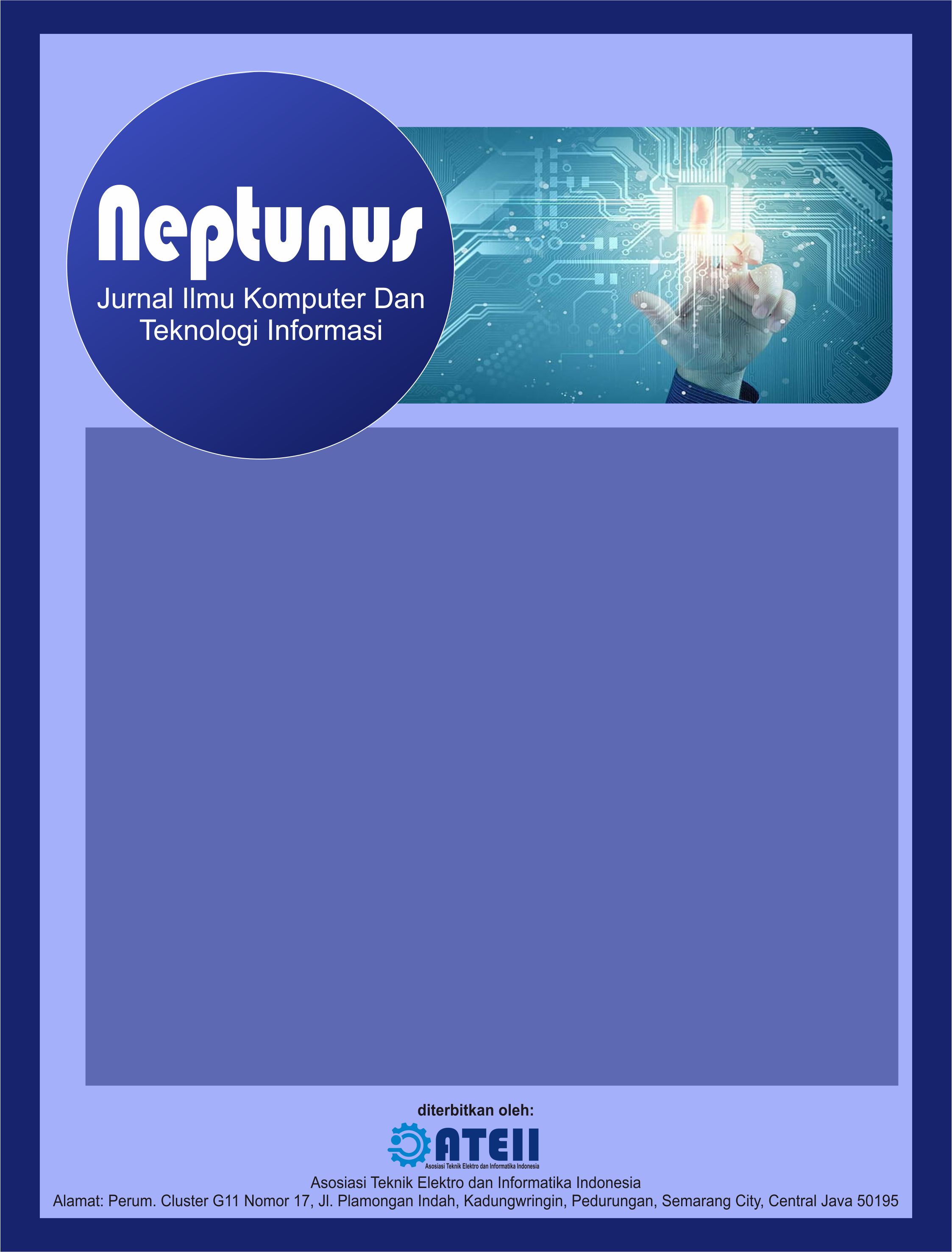Analisis Klaster dan Klasifikasi Emosi Dalam Musik K-Pop dengan K-Means dan Algoritma C 4.5
DOI:
https://doi.org/10.61132/neptunus.v2i3.228Keywords:
K-Pop, cluster analysis, emotion classification, K-Means, C4.5, Spotify, Streamlit, NgrokAbstract
The main objectives are to identify emotion patterns hidden in K-Pop music based on audio features extracted from the Spotify API and to build an emotion classification model that can predict the emotions of K-Pop songs.In this approach, the K-Means algorithm is used to cluster K-Pop songs based on audio features such as energy, valence, tempo, danceability, and speechiness. The clustering results reveal several main groups that represent variations in musical characteristics and emotions. Next, the C4.5 algorithm was used to build an emotion classification model based on the clustering results. The C4.5 model showed high performance with accuracy reaching 99.48% on a 90:10 dataset split, 99.21% on an 80:20 split, and 98.95% on a 70:30 split.The Streamlit application was developed to visualize emotion predictions from K-Pop songs with a web-based user interface. In addition, Ngrok was used to provide remote access to this application, allowing users to test and use the application remotely.The results of this study show that the combination of K-Means and C4.5 can effectively cluster and classify emotions in K-Pop music, providing valuable insights into the musical characteristics that influence emotions. This application has the potential to be used in further analysis, development of intelligent features in music applications, and improvement of user experience in listening to K-Pop music.
References
An, Y., Sun, S., & Wang, S. (2017). Naive Bayes classifiers for music emotion classification based on lyrics. In 2017 IEEE/ACIS 16th International Conference on Computer and Information Science (ICIS) (pp. 635–638). https://doi.org/10.1109/ICIS.2017.7960070
Chen, H., Xiao, Q., & Yin, X. (2019). Generating music algorithm with deep convolutional generative adversarial networks. In 2019 2nd International Conference on Electronic Technology (ICET) (pp. 576–580). https://doi.org/10.1109/ELTECH.2019.8839521
Conte, S., Jones, R., & Smith, T. (2020). The role of valence and energy in music clustering. Journal of Music Research, 45(2), 87-104.
Cui, F., Wang, R., Ding, W., Chen, Y., & Huang, L. (2022). A novel DE-CNN-BiLSTM multi-fusion model for EEG emotion recognition. Mathematics, 10(582).
Firmansyah, M. I., Rohman, R. S., & Marsusanti, E. (2023). Penerapan algoritma klastering K-Means untuk fitur atribut pada layanan streaming musik Spotify. Indonesian Journal Computer Science, 2(2), 58–66. https://doi.org/10.31294/ijcs.v2i2.2465
Google Trends. (2024). Popularitas Musik K-Pop di Indonesia. Available: https://trends.google.com
Kaur, K., Dhaliwal, D. S., & Vohra, K. R. (2013). Statistically refining the initial points for K-Means clustering algorithm. International Journal of Advanced Research in Computer Engineering & Technology, 2(11), 2972–2977.
Kim, Lee, & Choi. (2016). Analysis classification to identify the relationship between musical features and emotions experienced by listeners.
Li, X., Song, D., Zhang, P., Yu, G., Hou, Y., & Hu, B. (2016). Emotion recognition from multi-channel EEG data through convolutional recurrent neural network. Paper presented at the 2016 IEEE International Conference on Bioinformatics and Biomedicine (BIBM), Shenzhen.
Nurhalimah, L., Hermanto, T. I., & Kaniawulan, I. (2022). Analisis klasifikasi mood genre musik pop menggunakan algoritma K-Means dan C4.5. JURIKOM, 9(4), 1006. https://doi.org/10.30865/jurikom.v9i4.4597
Nurhalimah, L., Hermanto, T. I., & Kaniawulan, I. (2022). Analisis klasifikasi mood genre musik pop menggunakan algoritma K-Means dan C4.5. JURIKOM, 9(4), 1006. https://doi.org/10.30865/jurikom.v9i4.4597
Smith, J., & Jones, A. (2019). Exploring emotional characteristics in music through valence and energy attributes. Journal of Music Psychology, 32(3), 210-225.
Solihah, N. (2016). Pengaruh modernitas K-Pop dalam membentuk clique pada santriwati Pondok Pesantren Krapyak Ali Maksum Yogyakarta (Doctoral dissertation, UIN Sunan Kalijaga Yogyakarta).
Supriyadi. (2018). Analisis klasifikasi genre musik pop dan klasik pada layanan streaming musik Spotify menggunakan artificial neural network (ANN). UII Yogyakarta.
Downloads
Published
How to Cite
Issue
Section
License
Copyright (c) 2024 Neptunus: Jurnal Ilmu Komputer Dan Teknologi Informasi

This work is licensed under a Creative Commons Attribution-ShareAlike 4.0 International License.





